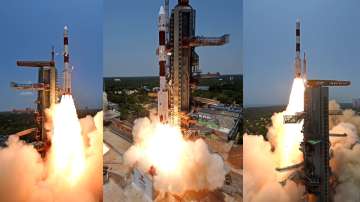ISRO (Indian Space Research Organisation) has reportedly stated that the cryogenic upper stage of the LVM3 M4 launch vehicle, which was successfully injected into the intended orbit during the launch of Chandrayaan-3 spacecraft on July 14 (2023), re-entered the Earth's atmosphere uncontrollably. The news surfaced when ISRO made the announcement yesterday in the afternoon.
In an official statement, ISRO stated: "The probable impact point was predicted over the North Pacific Ocean. The final ground track did not pass over India.”
The official statement of ISRO further reads that it was within 124 days (within 6 months from the time of launch) when the rocket body part- NORAD id 57321 re-entered the earth’s orbit. The post-mission orbital lifetime of LVM3 M4 cryogenic upper stage was fully compliant with the ‘25-year rule’ for low-Earth orbit objects which was recommended by the Inter-Agency Space Debris Coordination Committee (IADC),.
Post the injection of Chandrayaan-3, the upper stage reportedly underwent ‘passivation’ in order to remove residual propellant and other energy sources in order to minimise the risks of accidental explosions- said the space debris mitigation guidelines prescribed by IADC and the United Nations.
In the statement, ISRO further added: "Passivation and post-mission disposal of this rocket body in adherence to the internationally accepted guidelines once again reaffirms India's commitment to preserve the long-term sustainability of outer space activities.”
On the other hand, it was reported that the Indian space organization has invited youth with innovative ideas and designs of robotic rovers for future missions.
ISRO stated, "In line with this vision, UR Rao Satellite Centre (URSC)/ISRO solicits from the youth of India, innovative ideas and designs of robotic rovers for future missions through the conduct of a space robotics challenge with an objective to provide development opportunities in space robotics to the participating entities and to leverage the creative thinking among the youth of our nation for ISRO interplanetary missions," ISRO said.
It further added, "This is an invitation for the student community for the design and realisation of a 'Wheeled/Legged Rover' encompassing the development of complete hardware and software. The solutions provided by the students in IRoC-U 2024 have a greater chance of getting incorporated into ISRO's future interplanetary robotics missions.”
ALSO READ: Conversational AI vs. generative AI: What's the difference?
